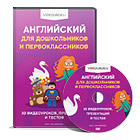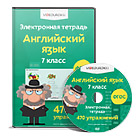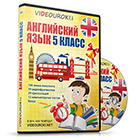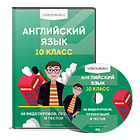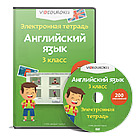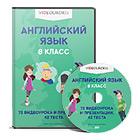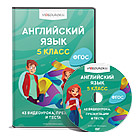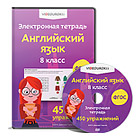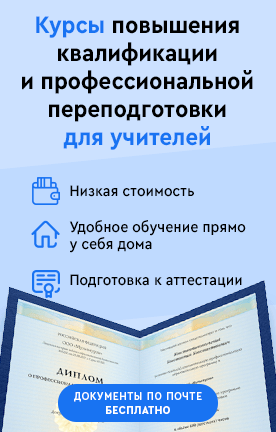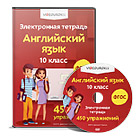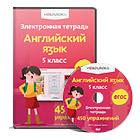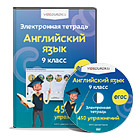| Form VII «а» Medium term plan 68 hours |
I term 2015 y |
| The theme |
Date | Learning Objectives/Outcomes | Activities & Teaching Method |
Assessment |
Differentiation | Resources & Homework |
|
Unit I. Step One Getting to know each other.
|
01.09.2015 07.09.2015 | Students will get to know each other through a poetry writing activity. Students will practice writing a form poem. Students will practice handwriting and art skills.
Develop subject expertise and facilitate the sharing of good practice in the teaching of English. Develop in teachers the confidence to introduce pupils, whatever their background or ability, to challenging texts and materials and difficult problems in order to promote interest in the subject. | Greetings and introductions.
Talking about dislikes.
Talking about the results of the past events, in the present time | Observations and oral questioning
Written comments on children’s work
Written work and discussion.
Evaluation of lessons in planning.
| Extension: Write some evidence that there are forces working in the classroom. Draw a diagram to show that. Support: Pupils to be helped to read and understand the pages. To talk over the questions with the teacher and answer them verbally before writing the answers in their book. | Resources:
Optional (for fancy decorating):
Newspaper
A metallic gold pen
Small flowers
Wax paper
A cheese grater
Old crayons
An iron
Homework:
1.Ex: 9. Complete the table. Ex: 10. On page 11 2. Ex:16. Write a story about yourself. On page13
|
|
Step Two English is my favorite subject
|
08.09.2015 14.09.2015 | To understand the meaning of English subjects. To develop self-study habit.To enhance competencies in writing essays and gist of the passage in own words/ language. To develop their insight and favorable attitude towards English language. To developing the understanding about rules of grammar and their use in writing English. | Interviewing
Talking about the places they have visited
Talking about towns and Kazakhstan cities.
| Observations and oral questioning
Written comments on children’s work
Written work and discussion.
Evaluation of lessons in planning.
| Extension: Write an explanation to describe what is happening when items are placed in water and the Newton meter reads differently
Support: Help pupils to see what happens to the Newton meter and elastic band when the item goes into the water. | Resources:
Homework:
1.Ex: 5, 6 on page 16
2. Ex:18.19 on page 18
|
|
Step Three Having friends
|
15.09.2015 21.09.2015 |
1. How to identify what characteristics are important in a friend.
2. How to identify what a good friend does.
3. How to practice skills that help people make friends. | Encourage your child to talk with you about his or her friendships. If your child shows signs of feeling rejected or left out talk with him or her about it. Share a time when you felt the same way. Be sensitive to friendships that may involve negative activities or put-downs of other kids. Discuss it with your child and let him or her know how you feel about it | Observations and oral questioning
Written comments on children’s work
Written work and discussion.
Evaluation of lessons in planning.
| Extension: Write some evidence that there are forces working in the classroom. Draw a diagram to show that.
Support: Pupils to be helped to read and understand the pages. To talk over the questions with the teacher and answer them verbally before writing the answers in their book.
| Resources:
Handout 1 Friendship Song Handout 2 A Friend Is... http://www.learningforlife.org /exploring-resources/99-720/x08.pdf) Homework:
1.Ex: 6.10 on page 22 2. Ex:19,20 on page 24 |
|
Step Four My friend has been reading since morning
|
22.09.2015 28.09.2015 | To provide an opportunity for students to discuss and analyses the differences between the present perfect simple and present perfect continuous forms from a clear context
To develop skill of noticing word stress, weak forms of auxiliaries have/has and been |
Exchanging ideas Giving advice Expressing Opinions Interviewing
| Observations and oral questioning
Written comments on children’s work
Written work and discussion.
Evaluation of lessons in planning.
| Extension:
Support: Pupils to be helped to read and understand the pages. To talk over the questions with the teacher and answer them verbally before writing the answers in their book | Resources: http://www.developingteachers.com
Homework:
1.Ex: 9 on page 27
2. Ex:15.16 on page 29
|
|
Step Five Having pen – friends
|
29.09.2015 05.10.2015 | Access new, fun classroom activities help your students practice reading and writing in English Connect to a school in another part of the world, safely and easily possibly by exchanging more letters, arranging a video conference or even a school exchange Take a break from the usual course of studying English Show students that English is practical, helping them
| | Observations and oral questioning
Written comments on children’s work
Written work and discussion.
Evaluation of lessons in planning. | Extension: Add a different variable to the experiment and ask the pupils to predict the outcome.
Support: Use mixed ability groups so that there is adequate support for some pupils | Resources:. http://penfriends.cambridgeenglish.org/joinpenfriends.php
Homework:
1.Ex: 8 on page 31
2. Ex: 18on page 34
|
|
Active vocabulary
Test yourself
|
06.10.2015
12.10.2015 | Students will use context to identify the meanings of unfamiliar words | | Self assesment | Extension: Add a different variable to the experiment and ask the pupils to predict the outcome. Support: Use mixed ability groups so that there is adequate support for some pupils. | Resources:. http://www.quia.com/quiz/3179221.html
Homework:
Be ready all the grammar materials |
|
Unit II. Step One About animals
|
13.10.2015 19.10.2015
| •Work in small groups to –find, share and present information. •Work as a group to research information about one of four animal categories. •Individually research information about specific animals within their group’s category and collaborate to compile all of the research into one cohesive presentation. •Share information they have gathered for their category and their individual animal through the use of display and presentation. | The study of animals is frequently an integral part of the early primary science curriculum. Most children have some framework of knowledge about animals, on which further understanding can be built. Activities about animals can also incorporate a variety of skills — reading, observation, vocabulary, description, and comparison | Use the following three-point rubric to evaluate students' work during this lesson. | Extension: I will be available to answerquestions that pupils might have regarding extra aspects of this subject.
Support: Some pupils will work with the teacher while others will use peer support as a method of reinforcement. | Resources: http://www.discoveryeducation.com
Homework:
1.Ex: 11.12 on page 42
Ex:16.17 on page 44
|
|
Step Two Omar’s album |
20.10.201526.10.2015 | Look at pictures of adaptations present in caterpillars of Omar’s album and discuss their significance Model a stylized caterpillar out of recycled materials Exhibit good craftsmanship in their finished piece | | Observations and oral questioning
Written comments on children’s work
Written work and discussion.
Evaluation of lessons in planning | Support: Pupils to be helped to read and understand the pages. To talk over the questions with the teacher and answer them verbally before writing the answers in their book
| Resources: Free Presentations in PowerPoint format for K-12 Science Homework:
1.Ex: 9 on page 47
2. Ex:14.15 on page 49 |
|
Step Three Animals are in danger
Conclusion control test for I term
|
27.10.2015
02.11.2015 | Students will understand the major factors that cause animals become rare, threatened,endangered, and extinct. Students will gain an understanding of what is presently being done to save endangered animals. Students will explore their own ideas of what needs to be done, as well as what individuals and groups can do, to help save endangered animals. | In pairs, students will research an animal in order to gain an in-depth understanding of the problems and possible solutions for a particular | Observations and oral questioning
Written comments on children’s work
Written work and discussion.
Evaluation of lessons in planning | Extension: Write some evidence that there are forces working in the classroom. Draw a diagram to show that. Support: Pupils to be helped to read and understand the pages. To talk over the questions with the teacher and answer them verbally before writing the answers in their book | Resources:
Homework: Ex: 16.17 p54 Review
|
|
Review |
03.11.2015 | Participate in games and activities respecting the other students |
|
|
| Review |
|
| II term 2015 y |
|
Step Four The Green world |
16.11.2015 17.11.2015
|
Locate habitat elements on a specific site Assess site’s potential as a suitable habitat for a specific species Identify an area of the site that would include the most habitat elements for a specific species To increase understanding and confidence in producing lesson plans suitable for secondary school outdoor education sessions.
| Identify a suitable study site for students, either on or near school grounds. (A current or future Schoolyard Habitats loca- tion makes an excellent study site). Study sites should poten- tially provide habitat for at least 4 to 7 different species. | Describe another location in the community familiar to the students. Provide photographs, maps, or diagrams if needed. Ask them what they would include in a survey of that site. 2. Give students the results of another survey (perhaps completed by another class for another site), and ask them to suggest a plan to improve habitat quality at that site. | Extension: Write some evidence that there are forces working in the classroom. Draw a diagram to show that. Support: Pupils to be helped to read and understand the pages. To talk over the questions with the teacher and answer them verbally before writing the answers in their book | Tools for observing wildlife: field guides, binoculars, hand lenses (optional) Habitat worksheets
Homework: Ex: 8 page 57
Ex: 16.17 page 59 |
|
Step Five Living Plants |
23.11.2015 24.11.2015
| To recognize that there are different types of plants and animals in a local environment. To name some plants and animals and understand that they require different habitats to live. To relate simple life processes to plants and animals found in a local environment. The learner will: compare different ways of reading fiction and nonfiction text. recall facts from a nonfiction text. participate in a scientific experiment.
| Watch Learning Zone Class Clips - Plants and animals around us. Ask each group to record as many plants and animals as possible. Take the children outside into the local environment/school field and spend two minutes recording all the plants and animals they can see (use reference books to determine the names of any unfamiliar plants).
| Two points: Students created mostly legible, complete KWLQ charts that showed some thought and comprehension of scientific classification; successfully researched the answer to one or two questions; One point: Students created illegible or incomplete KWLQ charts that lacked thought and comprehension of scientific classification;
| Extension: Write some evidence that there are forces working in the classroom. Draw a diagram to show that. Support: Pupils to be helped to read and understand the pages. To talk over the questions with the teacher and answer them verbally before writing the answers in their book | Resources:
http://nmml.afsc.noaa.gov/education/taxonomy.htm
http://anthro.palomar.edu/animal/default.htm
http://homeworktips.about.com/library/weekly/aa101999.htm
http://library.thinkquest.org/11771/english/hi/biology/taxonomy.shtml
Homework: Ex: 6.7 page 61
Ex: 17 page 63 |
|
Active Vocabulary
Test yourself
|
30.11.2015
01.12.2015 | To understand and use vocabulary and grammar relating to effectively making a phone call/having a phone conversation
Possible learner difficulties: lack of relevant grammar and vocabulary to do this lesson without assistance. 1) Understand respiration 2) Draw a graph showing predator prey relationships 3) Understand how organisms interact within an ecosystem 4) Construct a food chain
|
| Observations and oral questioning
Written comments on children’s work
Written work and discussion.
Evaluation of lessons in planning | Extension: Write some evidence that there are forces working in the classroom. Draw a diagram to show that. Support: Pupils to be helped to read and understand the pages. To talk over the questions with the teacher and answer them verbally before writing the answers in their book
| Resources:
Test papers, worksheets
Homework: Review
|
|
Unit III Step One Eating in Britain
|
07.12.2015
08.12.2015 | To revise vocabulary related to food - To develop speaking skills/ discussing preferences and attitudes towards food - To get students interested in the topic and to develop their food vocabulary - To learn how to prepare a typical English recipe - To remind children about food safety and hygiene in the kitchen: the teacher demonstrates safety and cleanliness in practical work, e.g. wash hands, wear an apron, tie back long | - whip up simple recipes using their own creativity - use skills ranging from math (counting, measuring ingredients) to science temperature) and to learn patience and self-control (waiting for something to bake) - know the difference between “typical English breakfast “ and “traditional Englishbreakfast” - know how to prepare a typical | Observations and oral questioning
Written comments on children’s work
Written work and discussion.
Evaluation of lessons in planning | Extension: Write some evidence that there are forces working in the classroom. Draw a diagram to show that. Support: Pupils to be helped to read and understand the pages. To talk over the questions with the teacher and answer them verbally before writing the answers in their book | Resources: Blackboard, flashcards, pictures, books, photos, felt tips, pens, sheet of paper, copybook, school kitchen, kitchen utensils, oven, butter, white and brown sugar, eggs, vanilla, flour, salt, chocolate chips, bowl, cup. Homework: Ex: 12 page 70
Ex:19 page 72
|
|
Step Two School canteen
|
14.12.2015
15.12.2015 | “for and against”. To prepare arguments that agree and disagree with the statement “School canteens should only sell health snacks.” group will agree with the statement and need to provide reasons for discussion and the other group will disagree and
provide reasons against.
| 1. Explain to students that as a class they are going to prepare the background information that will establish the basic arguments for and against the statement “School canteens should only sell healthy snacks.” 2. Write the statement on the white board. 3. Explain that the class is going to be divided into two. One 4. Divide class into two groups. 5. Allocate groups | Observations and oral questioning
Written comments on children’s work
Written work and discussion.
Evaluation of lessons in planning | Extension: Write some evidence that there are forces working in the classroom. Draw a diagram to show that. Support: Pupils to be helped to read and understand the pages. To talk over the questions with the teacher and answer them verbally before writing the answers in their book | Resources: www.nap.edu.au/_Documents/PDF/2012%20Marking%20Guide.pdf Whiteboard Markers Large butchers paper Homework: Ex: 10.11 page 76
Ex:12.15 page 78 |
|
Step Three Our favorite recipes
|
21.12.2015 22.12.2015
| Identify key ingredients in Greek cuisine including fresh herbs, yogurt, olive oil and vegetables. • Demonstrate their ability to make yogurt dip and use a knife to cut vegetables. • List nutrients that are in yogurt and vegetables and describe the health bene | In this lesson, students learn about and cook with foods that are part of Greek cuisine, including fresh herbs, yogurt, olive oil and vegetables. Students also learn that Greek cuisine is a plant-based way of eating that keeps us healthy today and also prevent us from getting diseases in the future. | Observations and oral questioning
Written comments on children’s work
Written work and discussion.
Evaluation of lessons in planning |
Support: Pupils to be helped to read and understand the pages. To talk over the questions with the teacher and answer them verbally before writing the answers in their book | Resources:  Increasing Recipe Worksheets- Answer Key Increasing Recipe Worksheets- Answer Key Pumpkin Seed Snack Pumpkin Seed Snack Curious George Banana Bread Recipe Curious George Banana Bread Recipe
Homework: Ex: 5 page 80 Ex:13. 14page 84 |
|
Conclusion control test
Review |
28.12.2015
29.12.2015 | 1.They must define what is going to be learned.
2.They must give an indication of how that learning will be assessed. |
| Observations and oral questioning
Written comments on children’s work
Written work and discussion.
| Support: Pupils to be helped to read and understand the pages. To talk over the questions with the teacher and answer them verbally before | Resources: 
Homework: Review |
|
Form VII «а» Medium term plan – HEALTH
| III term 2016 y |
|
Week Commencing |
|
Learning Objectives/Outcomes |
Activities & Teaching Method |
Assessment |
Differentiation | Resources & Homework |
|
Step Four Table Manners
Step Five Shopping in Britain
|
11.01.2016 12.01.2016
18.01.2016 19.01.2016
| 1.Students will identify and practice skills associated with meal service. 2.Students will identify and demonstrate table setting techniques. 3.Students will identify how table setting influences the appearance of the food, sets the tone/feeling of the meal, and makes people feel important. 4.Students will identify and demonstrate correct etiquette while dining.
| 1. Have the students answer the following question on their bell ringer cards, “Where do you properly place a napkin while setting the table?” (on the plate, in the glass or on the table next to the fork) 2. When done, have the students return their cards to the class basket | Observations and oral questioning
Written comments on children’s work
Written work and discussion.
Evaluation of lessons in planning | Extension: Write some evidence that there are forces working in the classroom. Draw a diagram to show that. Support: Pupils to be helped to read and understand the pages. To talk over the questions with the teacher and answer them verbally before writing the answers in their book | Resources:  TABLE SETTING AND ETIQUETTE STUDY GUIDE TABLE SETTING AND ETIQUETTE STUDY GUIDE
TABLE SETTING WORKSHEET Table Setting and Etiquette PowerPoint Table Setting Worksheet Key Homework: Ex: 4 page 87 Ex:13 page 9 |
| Unit IV Step One
It really works
|
25.01.2016
26.01.2016
| Learn the shape and location of the heart, that the heart is a muscle and that we need a heart to live. Understand that children's hearts are a little larger than their fists. We can feel our heartbeat or pulse on some parts of our bodies. Understand that the heart is a muscle that we can't start or stop on purpose.
| Describe common symptoms of depression and several other mental health disorders. Identify possible causes and available treatments for depression and other mental disorders. Locate resources in one's community and on the Internet for information and services regarding prevention strategies for depression and other mental health disorders. |
Observations and oral questioning
Written comments on children’s work
Written work and discussion.
Evaluation of lessons in planning
| Extension: Write some evidence that there are forces working in the classroom. Draw a diagram to show that.
Support: Pupils to be helped to read and understand the pages. To talk over the questions with the teacher and answer them verbally before writing the answers in their book |
Resources:  http://www.heart.org/HEARTORG/Educator/FortheClassroom/Elementary http://www.heart.org/HEARTORG/Educator/FortheClassroom/Elementary
Homework: Ex: 6.8 page 102 |
|
Step Two At the doctor’s
|
01.02.2016
02.02.2016
| Students will:
1. Identify sources that teens often to turn to for answers to health-related questions.
2. Discover one way that teens are finding the answers to their health-related questions by reading and discussing "Teenagers Find Health Answers With a Click."
3. Research the answer to a particular health-related question in one of five general health-related categories (Mental Health; Sexual Development; General Health; Body Image; and Nutrition, Weight and Diet).
| Describe health problems • Identify parts of the body • Identify hospital vocabulary • Interpret doctor’s directions • Identify appropriate social language • Make predictions
| Small Group: Now have students check the predictions they made with their group in the Pre-Listening Activity. Did they make correct predictions? Can they choose the correct answers now?
Individual: Hand out a Cloze Dialogue. Have learners individually complete the dialogues. You can hand out a Dialogue template for any learners who want to write their own after they complete the Cloze Dialogue.
| Extension: Write some evidence that there are forces working in the classroom. Draw a diagram to show that.
Support: Pupils to be helped to read and understand the pages. To talk over the questions with the teacher and answer them verbally before writing the answers in their book | Resources:
Homework: Ex: 4 page 104 Ex: 13 page 106
|
|
Step Three Health Problem
|
08.02.2016
09.02.2016
| 2. Identify three benefits of walking. 3. Identify three ways to include walking in their day. 4. Identify ways to address one of the barriers they face in starting, maintaining or increasing their walking. 5. Set goals to increase and maintain their walking behavior. 6. Understand and use Sun Safety information to plan their walks. | • The brain is divided into two hemispheres that utilize two different modes of thinking. In each individual, one side of the brain is more dominant than the other side. •Brain dominance affects how a person processes information (learns). •Whether people are right-brain dominant or left-brain dominant, they possess characteristics of both hemispheres in their personalities and behavior. | After the activity and discussion, quiz students about appropriate strategies for dealing with stress. You might pose specific situations and have students suggest appropriate responses. Alternatively, students might role-play appropriate responses to stressful situations | Extension: I will be available to answer questions that pupils might have regarding extra aspects of this subject.
Support: Some pupils will work with the teacher while others will use peer support as a method of reinforcement | Resources: http://www.educationworld.com/a_tsl/archives/03-1
Homework: Ex: 6 page 108 Ex: 13.14 page 110
|
|
Step Four School rules
|
15.02.2016
16.02.2016
| 1.Present roles plays of different settings that teachers or students brainstorm 2. Have students brainstorm different ways to solve put-down situations. 3. Have a class discussion regarding praising people. Relate stories about what is happening in the halls. 4. Discuss/identify positive things about our school or other students. 5. End the day or a period where students are asked to state three to five positive things. | Ask the students to match the idioms with the definition, individually and then in pairs, before feeding back as a group. • For higher levels, a more interactive approach would be to cut up the idioms and definitions and distribute them amongst the group of students. Students mingle to find their matching pair of idiom and definition.
| In assessing student work, check to see that the following was accomplished: Students contributed to the discussion of positive behaviors. Students created reasonable consequences for those who need more time to develop the behaviors. A written list of class rules was formed from their responses. The classroom pictures clearly show them participating in a positive way, and students are able to verbally communicate that to their peers. | Extension: Write some evidence that there are forces working in the classroom. Draw a diagram to show that.
Support: Pupils to be helped to read and understand the pages. To talk over the questions with the teacher and answer them verbally before writing the answers in their book | Resources:
Homework: Ex: 13 page 113 Ex: 16 page 114
|
|
Step Five What should you do to keep fit?
|
22.02.2016 23.02.2016
| 1. Learn the health benefits of losing and/or managing weight. 2. Learn safe ways for staying active and keeping fit. 3. Learn meal-planning tips to cut empty calories and extra fat out their diets. 4. State or write one fitness goal following the lesson.
This lesson is about the many ways in which being physically active and Resistance, strength and weight bearing activities: such as carrying a child, lifting weights and walking. These help build and maintain bones and muscles by working them against gravity.
| Pass around the piece of paper: “A Goal for my Health.” Tell participants to write down one kind of exercise or activity they can do on a regular basis that will help them lose weight or stay fit. They may choose any of the ideas you presented today. Tell them to take this paper home and place it on their fridge or in another area where it will be visible.
| Observations and oral questioning
Written comments on children’s work
Written work and discussion.
Evaluation of lessons in planning
| Extension: Write some evidence that there are forces working in the classroom. Draw a diagram to show that.
Support: Pupils to be helped to read and understand the pages. To talk over the questions with the teacher and answer them verbally before writing the answers in their book | Resources: Exercise and Diabetes. Educational Handout. St. Mary’s Hospital, Athens, GA. June 2001 Homework: Ex: 7 page 117 Ex:12.13 page 118
|
|
TEST yourself |
29.02.2016
| To understand and use vocabulary and grammar relating to effectively making a phone call/having a phone conversation
Possible learner difficulties: lack of relevant grammar and vocabulary to do this lesson without assistance. 1) Understand respiration 2) Draw a graph showing predator prey relationships 3) Understand how organisms interact within an ecosystem 4) Construct a food chain 5) Know the difference between photosynthesis and respiration | Start out with question and answer discussion about following hypothetical situation: This may get a laugh. It should get the students' attention. Continue to ask around the room. T: “Does anyone ask their guests to remove their shoes when they come into your home?”If someone does, go with the flow... Maybe we have nice expensive rugs, or we just like the feeling of everyone being in their stocking feet | Observations and oral questioning
Written comments on children’s work
Written work and discussion.
Evaluation of lessons in planning | Extension: Write some evidence that there are forces working in the classroom. Draw a diagram to show that. Support: Pupils to be helped to read and understand the pages. To talk over the questions with the teacher and answer them verbally before writing the answers in their book
| Resources:
Test papers, worksheets
Homework: Review
|
|
Unit V. Step one. How do you get to school?
|
01.03.2016 07.03.2016
| learn more about the places and different cultures in the world. - read articles or information and understand the main ideas. - apply their background knowledge and their readings in speaking and writing. - learn to use computer and the Internet as tools for their learning. - learn vocabulary related to the topic of travel. - have exposure to authentic reading texts. - learn to express their ideas and thoughts in writing.1. | 1.identify places on the world map and learn something about different places from their classmates. 2. understand the meaning of the vocabulary in the discussion questions and use the vo- cabulary in their discussion. 3. share their experience and knowledge of different places they know with their classmates. 4. write about a place they want to visit and explain the reasons in a 15-minute free writing activity.
| Tell Ss they will do an Internet search on the place they wrote about in their free writing activity. Take the class to the computer lab at the school. (The Ss are familiar with Inter- net searches.) 2. Ss will do a scavenger hunt to look for particular information about their cities/counties. Give Ss the questions for the scavenger hunt (see Appendix 2). 3. Go over the questions with the Ss, and ask them to find answers on the Internet and give examples. | Extension Write some evidence that there are forces working in the classroom. Draw a diagram to show that. Support: Pupils to be helped to read and understand the pages. To talk over the questions with the teacher and answer them verbally before writing the answers in their book
| Resources:
http://www.educationworld.com/a_tsl/archives/03-1
Homework: Exercises: 9.10 Page 125
Exercises: 16.17 Page 127 With worksheets |
|
Step two. Going to Britain
|
8.03.2015 14.03.2015
| • To explore different sides of an argument. •To engage in constructive pair and group work. •To participate in a discussion that leads to a collective decision about a controversial issue. •Laminated Photocopies of fact-sheet about Miss Naysmith. •Copies of the Human Rights Act 1998. •Copies of social service’s guidelines and responsibilities | Ask pupils to think about where people live – list as many places as they can think of (e.g. house, bungalow, flat, bedsit, canal-boat, lighthouse etc.) Feed back to whole class. Put a picture of Miss Naysmith up on the board and explain that for over thirty years Miss Naysmith has lived in her ca | • Teacher and TA interaction with pupils – helping those who are finding the work difficult, asking extension questions to more able pupils. • Teacher selection of readers should take into account the relative difficulty of the paragraph in question. | Extension: Write some evidence that there are forces working in the classroom. Draw a diagram to show that. Support: Pupils to be helped to read and understand the pages. To talk over the questions with the teacher and answer them verbally before writing the answers in their book
| Resources:
http://www.puzzlesolver.com/puzzle.php?id=5 http://www.raft.net/ideas/Nail%20Puzzle.pdf http://www.teamworkandteamplay.com/resources/tt_nailpuzzle.pdf Homework: Exercises: 6 Page 130
Exercises: 13.14 Page 132 With worksheets
|
|
Conclusion control work for III term
|
15.03.2015
| • identify potential hazards that are created by poor safety procedures, unsafe practices and human error • evaluate hazardous situations and determine how to control or eliminate the hazards
|
| Talk to the people involved and look at your centre injury/accident records. Seek advice from those affected by the changes and consult with them regarding any modifications to their workplace or work routines. | Extension: Write some evidence that there are forces working in the classroom. Draw a diagram to show that. Support: Pupils to be helped to read and understand the |
|
| Form VII «а» Medium term plan
| IV term 2016y |
|
Step three.
Holiday postcards
|
04.04.2016 05.04.2016 | To be able to explain our summer holiday plans To locate on a world map where we are going to go on holidays. To apply listening strategies. To be able to write a Postcard • To be interested in knowing what you classmates have done in the summer. • To be able to locate the holiday places on the group map. • To revise continents and countries. • To be able able to write an organized text about holidays | 1.Starter: Where is it? Show students a set of postcards from different places and they will have to recognize them telling the others where and what they think it is. You can also do it on the IWB, it will be more motivating. 2.Where are you going on holiday? Oral activity in which they have to tell their holidays plans. Brainstorm possible sentences they might use and write on board, this will become a help for the weaker students.
| Class observation. Are they using the language from the frames? Are they listening to their classmates?
Formal assessment using the AYLLIT Rubric | Visual help to understand new vocabulary: postcards. Language frames: starter activity postcard Dictionaries and picture dictionaries on group tables. Postcard Game. Matching game on IWB, students have to match the postcard picture with the correct text, the student whose postcard is matched comes to the front of the class and explains a bit about his/her holiday. | Resources:
Real postcards & stamps
Visual help to understand new vocabulary: postcards.
Language frames: starter activity postcard
Dictionaries and picture dictionaries on group tables.
Homework: Exercises: 10 Page 136
Exercises: 16 Page 13 |
|
Step four.
Travelling light
|
11.04.2016
12.04.2016 | I will be able to classify materials as those which can reflect, refract, or absorb light. I will be able to develop questions that guide scientific inquiry. I will be able to conduct scientific investigations individually and in teams: lab activities, field studies. I will be able to communicate observations orally and in writing. Language: I will be able to use at least 3 of the vocabulary terms while working with my group. | The students will then use their activity sheet to try to align their group so that the light travels through all of the index cards and lights up the light bulb that is drawn on the last index card. Enrichment Activities: Allow students to experiment with the cards and or mirrors (if available) to find other ways to get the flashlight beam to light up the index card. | Students will be assessed throughout the activity on their participation as well as on their activity sheet. | Extension: Write some evidence that there are forces working in the classroom. Draw a diagram to show that. Support: Pupils to be helped to read and understand the pages. To talk over the questions with the teacher and answer them verbally before writing the answers in their book
| Resources:
laser pointer, hair spray, large index cards, crayons or markers, scissors, flashlight, activity sheet
Homework: Exercises: 5 Page 140
Exercises: 9 Page 142
|
|
Step five.
Have you been to central Asia?
|
18.04.2016 19.04.2016 | To enrich pupil’s knowledge by this theme To develop pupil’s abilities in speech To educate the feelings of love towards our Motherland- Kazakhstan 1) Culture: Explain the relationships that exist between societies and their architecture, art, music and literature (621: 18A) 2) Culture: Describe ways in which societal issues influence creative expressions (622: 18C) | Divide the class into five groups. Each group will be responsible for reporting about 1 of the 5 countries that define the Central Asian region. (i.e., one group will be Kazakhstan, one group will be Turkenmistan, followed by Uzbekistan, Tajikistan, and Kyrgyzstan.) 2. Distribute the following worksheets: Central Asia: Political Map, Central Asia:
| As a class, review worksheet responses. Ask students to highlight the boundaries of Central Asia on their blank maps. Then, using a broader definition of Central Asia, have students list questions (and answers) for each kind of map. Remind students that the questions should reinforce the purpose of each type of map as well as the significant features of Central Asia | Maps are used to provide a wide range of information about a particular area. In this lesson, students will use physical, political, and thematic maps to investigate the geography of Central Asia through a scavenger hunt. Students will explore ways in which the region of Central Asia is defined and will create their own map-based scavenger hunt for other students to solve. | Resources:
slides (Presentation)
Homework: Exercises: 4 Page 144
To write an essay |
|
Test yourself
|
25.04.2016 | To understand and use vocabulary and grammar relating to effectively making a phone call/having a phone conversation
Possible learner difficulties: lack of relevant grammar and vocabulary to do this lesson without assistance. 1) Understand respiration 2) Draw a graph showing predator prey relationships 3) Understand how organisms interact within an ecosystem 4) Construct a food chain 5) Know the difference between photosynthesis and respiration | Start out with question and answer discussion about following hypothetical situation: This may get a laugh. It should get the students' attention. Continue to ask around the room. T: “Does anyone ask their guests to remove their shoes when they come into your home?” If someone does, go with the flow... Maybe we have nice expensive rugs, or we just like the feeling of everyone being in their stocking feet. What will you say to them? | Observations and oral questioning
Written comments on children’s work
Written work and discussion.
Evaluation of lessons in planning | Extension: Write some evidence that there are forces working in the classroom. Draw a diagram to show that. Support: Pupils to be helped to read and understand the pages. To talk over the questions with the teacher and answer them verbally before writing the answers in their book
| Resources:
Test papers, worksheets
Homework: Review
|
|
Unit VI. Step one. Having fun!
|
26.04.2016
02.05.2016 | Examine statistics related to the readership and popularity of romance novels. Break down and analyze the behavior of a woman who reads romance novels and tries to recreate a fantasy from a novel in her real life. Determine which psychological theory of motivation best explains this woman's behavior. | 1. Ask students to describe the person they think is the typical buyer of romance novels in the United States. Prompt them to respond with details about gender, age, marital status and where in the country that person might live. Lead a brief class discussion that results in a consensus about the profile of a typical buyer.
| Observations and oral questioning
Written comments on children’s work
Written work and discussion.
Evaluation of lessons in planning | Extension: Compare student analyses from the main lesson activity. Have each pair of students share its thinking with the rest of the class. Which theory of motivation best explains Hiroko's behavior? Did each pair come to the same conclusion? Why or why not? Did male students think differently about Hiroko's behavior than female students? Does student diversity influence conclusions? Explain. | Resources: Internet access and equipment to show the class online video and conduct research Handout: Buyers of Romance Novels in the United States (PDF file) Handout: Guilty Pleasures Viewing Guide: Dancing in Tokyo (PDF file) Homework: Exercises: 4 Page 150
Exercises: 8. 9 Page 152
|
|
Step two. Sport and games
|
09.05.2016
10.05.2016
| Sports vocabulary, question forms using the verbs ‘play’ and ‘do’ or common action verbs describing sports | Place students into groups of three or four to play a game with the flashcards. First students deal out all the cards. The first student takes an athlete card from his/her hand and chooses another student to ask a question to. For example, if the athlete is Yao Ming, the student asks, “What sport does he do?” | Observations and oral questioning
Written comments on children’s work
Written work and discussion.
Evaluation of lessons in planning | Extension: Write some evidence that there are forces working in the classroom. Draw a diagram to show that. Support: Pupils to be helped to read and understand the pages. To talk over the questions with the teacher and answer them verbally before writing the answers in their book | Resources: Homework: Exercises: 10 Page 156
Exercises: 20 Page 157
|
|
Step three.
Films
Step four.
Music
|
16.05.2016
17.05.2016
| Students will listen to movie scores. Students will predict what is happening in the scene. Students will discuss what instruments and tempos do to enhance the action. Students will compose their own simple rhythms for another popular scene. Students will write their reactions.
| 1. Introduce key music vocabulary, melody, tempo, dynamics, pitch (all defined on the musical terms sheet, instrument sounds and names (strings, woodwinds, percussion, brass). Explain to students that they are going to be listening to a piece of music used in a popular children’s movie. It is their job to guess what the action is while the music is being played. | Observations and oral questioning
Written comments on children’s work
Written work and discussion.
Evaluation of lessons in planning | Extension: Write some evidence that there are forces working in the classroom. Draw a diagram to show that. Support: Pupils to be helped to read and understand the pages. To talk over the questions with the teacher and answer them verbally before writing the answers in their book | Resources:
Homework: Exercises: 8.9.11 Page 160
Exercises: 14 Page 166
|
|
Carnivals and festivals
Conclusion control test for IV term
|
23.05.2016
24.05.2016 | 1.- Act out the story. 2.- Understand the story, discovering and deducing new meanings, without translation. 3.- Repeat the story, with visual aids, matching words and pictures (oral activity). 4.- Combine body language and oral language (dramatising the poem). 5.- Follow the instructions given by the teacher when arts and crafts are being made, following a sequence of actions that would imply manipulation (pinch, roll, press...). | To introduce this activity, start by showing some flashcards of clothes. You can use the flashcards for this unit or any other flashcards you have. Ask the students “What’s this?” and point at a piece of clothing. The students answer. When you think the children remember the basic clothes vocabulary fairly well, ask the students to look at you for one minute. + item of clothing” structure several times. | Observations and oral questioning
Written comments on children’s work
Written work and discussion.
Evaluation of lessons in planning | Extension: Write some evidence that there are forces working in the classroom. Draw a diagram to show that. Support: Pupils to be helped to read and understand the pages. To talk over the questions with the teacher and answer them verbally before writing the answers in their book | Resources:
• Clothes’ flashcards • Tommy’s flashcard • Cardboard sheets with the following pictures: princess’s crown, pirate’s hat, witch’s hat, clown’s hat. • A real clown’s hat, a big tie and a red clown’s nose.
Homework: Exercises: 3.9 Page 169
|
| TOTAL | 68 HOURS |
|
|
|
|
|
